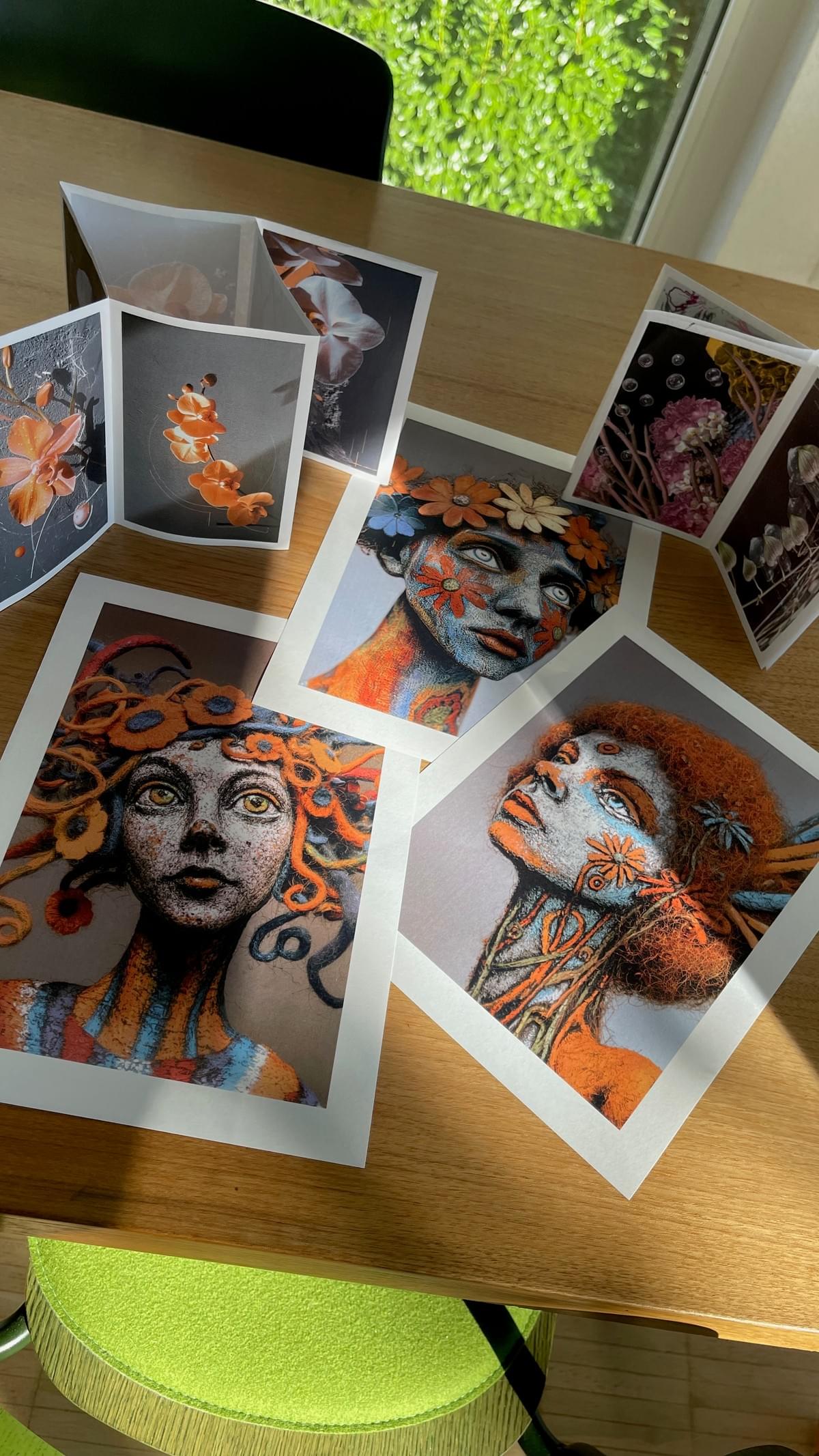At the end of August, I attended the “Analog meets Generative” course at the ZHdK Summer School, led by Grit Wolani and Ramona Geschwend. The program explored how analog input- photos, drawings, and physical objects - can be transformed into AI-generated visuals.
The Concept: From Real-World Inputs to AI Output
The central idea of the course was to start with tangible, real-world material and use it as the foundation for AI-driven image creation. The theme, “Flora Nova”, provided a practical framework: flowers were available in the classroom as a starting point, but participants were encouraged to source inspiration from their surroundings.
I collected visual material directly from the venue, the Toni-Areal in Zurich - photographing flowers in the classroom, graffiti in the hallways, plants from the terrace, and architectural structures. This diverse set of inputs became the basis for moodboards created in the AI generation tool Midjourney.
Method: Combining Analog Inputs with Generative AI
Using these moodboards, I experimented with generating abstract AI-based flower visuals. ChatGPT assisted in shaping project scenarios and prompts, enabling me to explore how different visual languages emerge when analog and digital inputs are combined.
By the end of the first day, we had already produced tangible results: participants printed zines showcasing their AI-created imagery. This rapid iteration - analog to AI to printed output - demonstrated how quickly concepts can move from inspiration to execution. (My images)
Extending the Experiment
On the second day, I initially planned to sketch new drawings for AI transformation. Instead, I revisited hand-drawn material from the 1990s and digitized it as input for new moodboards. Feeding this into Midjourney and experimenting with different styles led to another round of unique visual outcomes.
This process showed how even older, “dormant” creative assets can be reactivated through AI, creating value from material that might otherwise remain unused. (My visuals)
Key Takeaways
- Speed of Iteration: The workflow - from analog inspiration to AI generation to printed artifact - was compressed into just two days. This highlights how creatives can rapidly prototype ideas and visualize concepts.
- Reusing Existing Assets: Old content (such as archived drawings, product photos, or design drafts) can be repurposed into entirely new forms with AI, extending the lifecycle of intellectual and creative heritage.
- Human-AI Collaboration: The role of the participant was not replaced but amplified. Human input set the direction, while AI extended the creative possibilities.
Conclusion
The course was both entertaining and eye-opening. It demonstrated in practice how analog materials and AI tools can be combined to generate fresh concepts. For creatives and art hobbyists, this offers a glimpse into the future of innovation: blending the tangible with the digital to accelerate creativity and unlock new opportunities.

